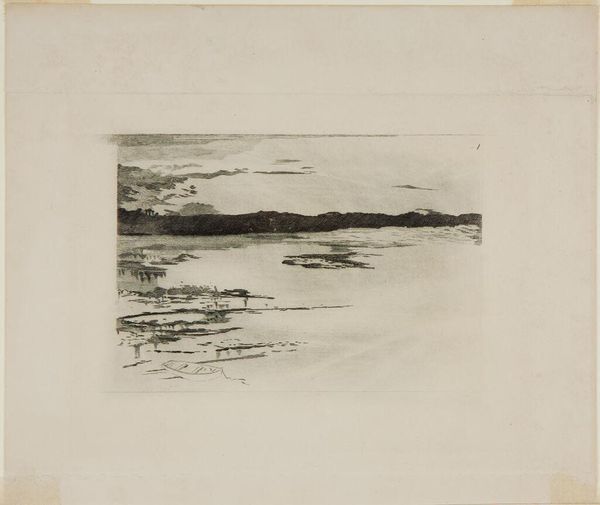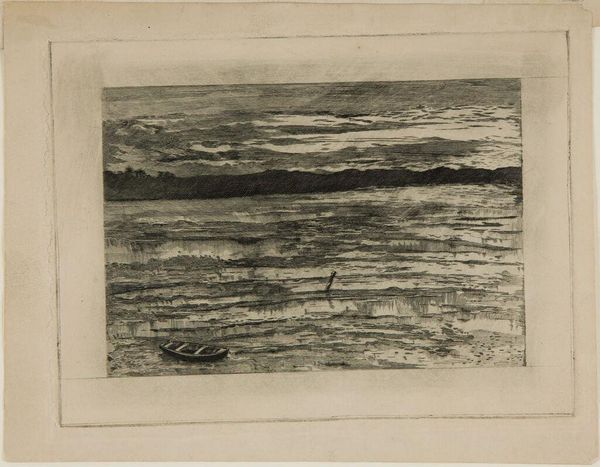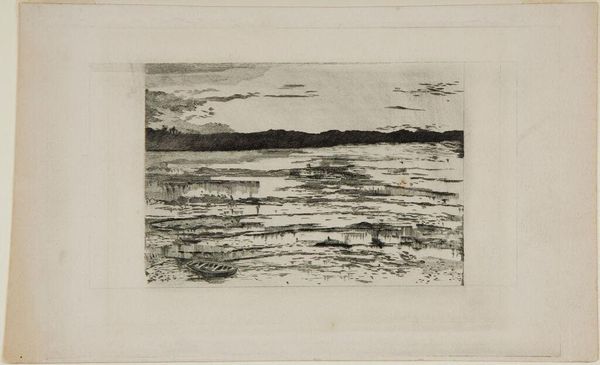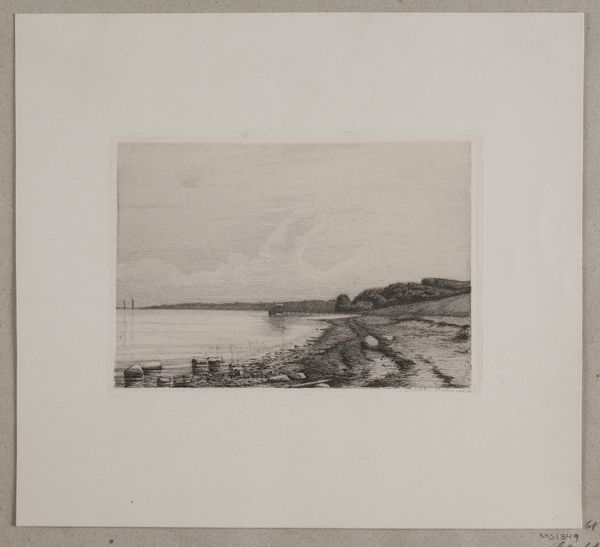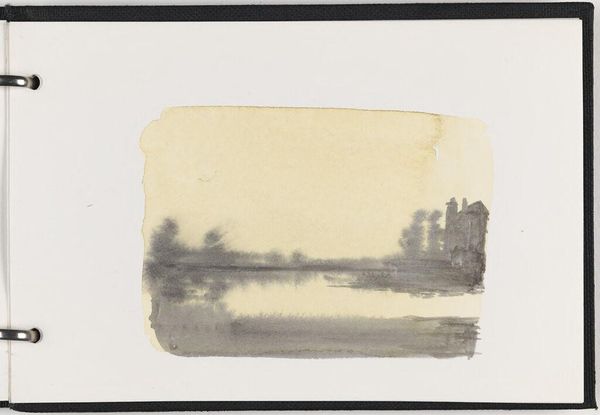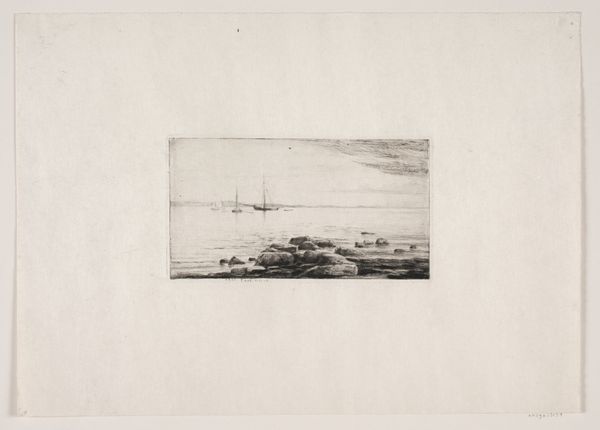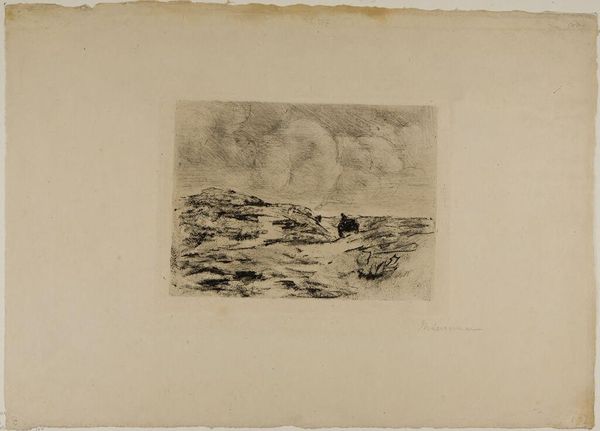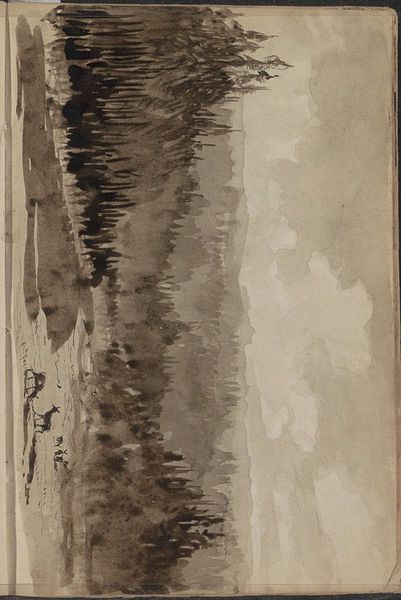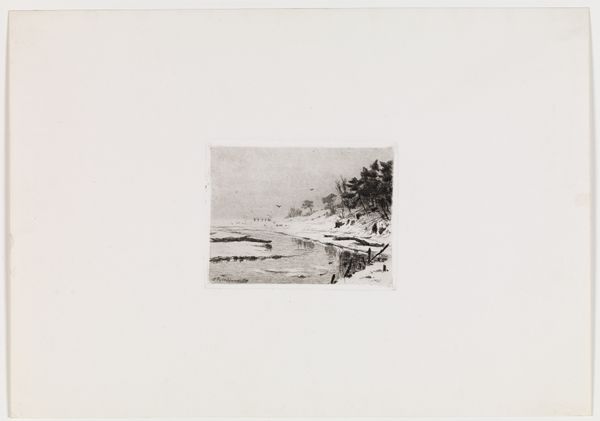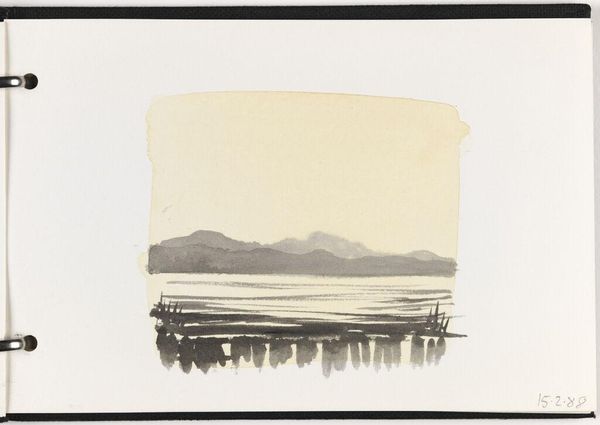
Seascape c. 19th century
Copyright: CC0 1.0
Curator: Right now, we’re looking at William Fowler Hopson’s "Seascape," housed here at the Harvard Art Museums. It gives me such a melancholic feeling, almost like a half-remembered dream. Editor: Interesting. I immediately think of the labor involved in etching—the biting of the metal, the printing process itself. It points to a very material engagement with representing the sea, moving it from a Romantic ideal to a tangible object created through labor. Curator: You’re right, the etching is so deliberate. It makes me think about how fleeting moments are captured and transformed into something enduring. The little boat there, so still...is it waiting? Has it just arrived? Editor: Consider, too, how the image would have been circulated. Prints like this democratized art viewing, making images accessible beyond the elite. It reframes our understanding of landscape as a consumable item, rather than a purely aesthetic experience. Curator: I love that thought. It makes me see the piece in a completely new light, a negotiation between artist, subject, and society. Editor: Exactly, and that's what makes art so enduring, right?
Comments
No comments
Be the first to comment and join the conversation on the ultimate creative platform.
